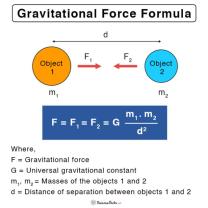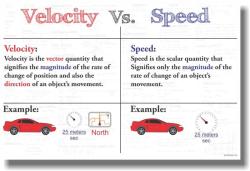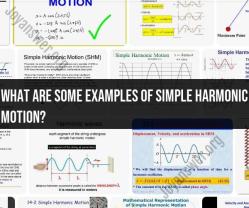What is the relation between angular and linear acceleration?
Angular acceleration () and linear acceleration () are related through the following formula:
where:
- is the linear acceleration,
- is the radius or distance from the axis of rotation to the point where linear acceleration is being measured,
- is the angular acceleration.
This formula illustrates how linear acceleration is related to angular acceleration in a rotational motion scenario. The linear acceleration at a point on a rotating object is determined by the product of the angular acceleration and the distance from the axis of rotation (radius).
In simple terms, when an object undergoes rotational motion, points at different distances from the axis of rotation will experience different linear accelerations, even if they share the same angular acceleration. The linear acceleration increases with an increase in the radius, and the relationship is proportional, as shown by the formula above.
This relationship is an essential concept in rotational dynamics and is often encountered in the study of physics and engineering, especially in the analysis of rotating objects and circular motion.
Correlation between Angular and Linear Acceleration:
Angular acceleration (α) and linear acceleration (a) are closely related in physics, as they represent how quickly an object changes its rotational and linear motion, respectively. The relationship between these two quantities can be expressed through the following equation:
a = α * r
where:
- a is the linear acceleration
- α is the angular acceleration
- r is the distance from the point of interest to the axis of rotation
This equation essentially states that the linear acceleration of a point on a rotating object is directly proportional to both its angular acceleration and its distance from the axis of rotation. The farther a point is from the axis, the larger its linear acceleration for the same angular acceleration.
Here are some key points to understand the relationship:
- Direction: Both angular and linear acceleration have direction. The linear acceleration vector points along the tangent to the object's path, while the angular acceleration vector points perpendicular to the plane of rotation.
- Tangential and centripetal components: Linear acceleration can be decomposed into two components: tangential and centripetal. The tangential component is parallel to the object's motion and is responsible for its speed change, while the centripetal component is perpendicular to the motion and provides the force required to keep the object moving in a circular path.
- Non-uniform circular motion: For an object in non-uniform circular motion, both angular and linear acceleration are continuously changing. The angular acceleration determines the rate at which the object's angular velocity changes, which in turn affects its linear acceleration through the equation mentioned above.
Changes in Angular Motion and Linear Movement:
Changes in angular motion directly affect the object's linear movement. Here are some specific examples:
- Increasing angular acceleration: When an object's angular acceleration increases, its linear speed will also increase (assuming constant distance from the axis). This is because the tangential component of linear acceleration increases with angular acceleration.
- Decreasing angular acceleration: When an object's angular acceleration decreases, its linear speed will also decrease. This can be observed during deceleration or when an object approaches a standstill.
- Changing direction of angular acceleration: When an object's angular acceleration changes direction, it causes a centripetal acceleration. This is responsible for the change in direction of the object's linear motion, resulting in turning or curving.
Understanding the relationship between angular and linear acceleration is crucial in various applications, including:
- Mechanics: Analyzing the motion of rotating objects like wheels, gears, and turbines.
- Astronomy: Studying the motion of planets, stars, and galaxies.
- Robotics: Designing and controlling robots with complex movements.
- Sports: Analyzing the movements of athletes and optimizing their performance.
By understanding how angular and linear acceleration are linked, we can gain a deeper understanding of rotational motion and its impact on linear movement in various physical phenomena.













